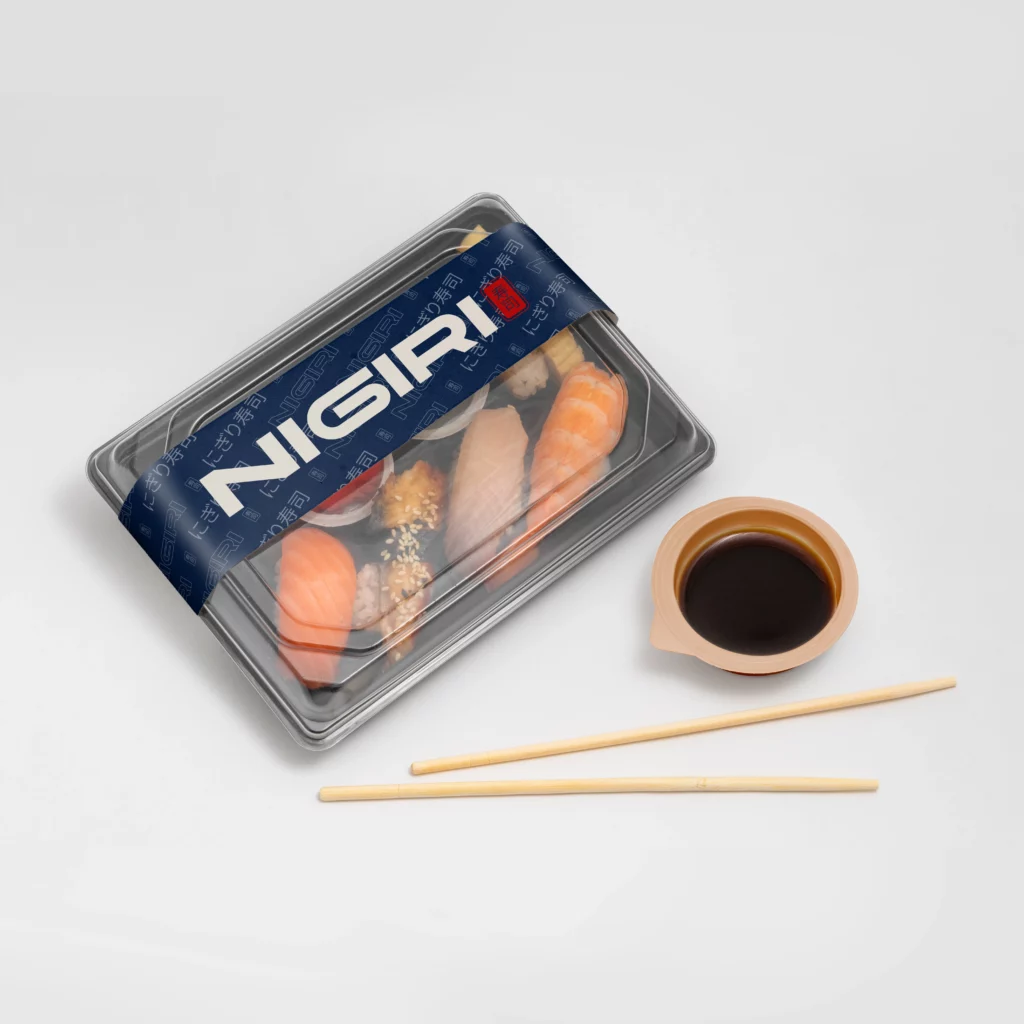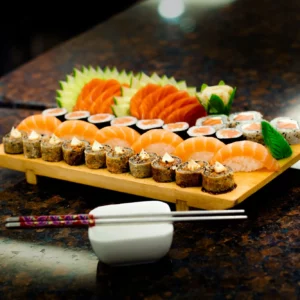A Guide to Preserving Sushi Freshness in Packaging
By
Contents
- Understanding Sushi’s Packaging Challenges
- Essential Qualities of Effective Sushi Packaging
- Material Options for Sushi Packaging
- Case Insight: Modern Custom Packaging Integration
- Packaging Design Considerations for Sushi Brands
- Cold Chain Packaging for Sushi Distribution
- Sustainability and Customer Expectations
- Frequently Asked Questions (FAQ)
- Conclusion
Sushi, a globally beloved delicacy, is highly sensitive to time, temperature, and environmental exposure. Its defining qualities—delicate texture, precise presentation, and raw freshness—make it one of the most challenging food products to package and distribute safely.
As consumer demand for takeout and delivery rises, especially in urban and fast-paced regions, sushi businesses must adapt. Effective sushi packaging is no longer a matter of convenience; it is a critical factor that directly affects product integrity, customer satisfaction, and food safety compliance.
This guide provides a comprehensive overview of packaging strategies and materials that ensure optimal freshness of sushi, while highlighting modern solutions adopted by forward-thinking packaging suppliers.
Understanding Sushi’s Packaging Challenges
Sushi freshness deteriorates quickly under non-ideal storage or transit conditions. The key challenges include:
- Moisture imbalance: Vinegared rice can dry out, while seaweed may become limp due to trapped humidity.
- Temperature sensitivity: Raw fish must be kept at safe temperatures to prevent bacterial growth.
- Odor absorption: Fish and rice are prone to odor contamination from packaging materials.
- Condensation: Trapped humidity leads to sogginess and may compromise food safety.
- Time decay: Even slight delays in delivery without proper temperature management can affect sushi’s taste and texture.
Packaging that fails to address these factors can result in unsatisfactory customer experiences, product returns, or health risks.
Essential Qualities of Effective Sushi Packaging
Preserving sushi freshness begins with material and structural design choices. A functional sushi container should fulfill the following technical requirements:
1. Moisture Management
- Use breathable food-grade liners or micro-perforated seals that allow limited airflow to prevent rice dehydration and condensation buildup.
- Avoid fully airtight containers for products with high humidity retention, such as rolls with cucumbers or tamago.
2. Temperature Retention
- Incorporate insulation layers within the outer box to minimize thermal fluctuation during last-mile delivery.
- For extended distribution, some brands integrate cold gel pockets or temperature control inserts.
3. Odor Resistance and Neutrality
- Select packaging materials with inert coatings that do not absorb or transfer odors.
- Avoid recycled plastic or paper unless specifically treated to meet food-contact-grade standards.
4. Rigidity and Structural Protection
- Sushi must retain its precise presentation upon delivery. Use rigid containers with dividers that hold each piece in place and avoid lateral movement.
5. Food Safety and Regulatory Compliance
- All packaging must comply with FDA or local food-contact regulations.
- For export or cross-border operations, multilayer certifications may be required (e.g., ISO 22000, HACCP).

Material Options for Sushi Packaging
Not all materials are created equal when it comes to packaging fresh sushi. Below is a comparative analysis of common materials used:
| Material Type | Moisture Control | Insulation | Eco-Friendly | Customizability | Cost Level |
| PET Plastic | Moderate | Low | Recyclable | High | Low |
| PP (Polypropylene) | Good | Moderate | Limited | High | Low |
| Paperboard + Coating | Moderate | Moderate | High | High | Medium |
| PLA Bioplastic | Moderate | Moderate | Compostable | Moderate | Medium-High |
| Bagasse + Lid | Good | Good | Compostable | Low | Medium |
Case Insight: Modern Custom Packaging Integration
As the sushi industry evolves, more businesses seek custom packaging partners who can streamline the entire process from design to delivery. One notable provider in this field is Fusenpack, a packaging manufacturer that specializes in custom food packaging for small to medium-sized restaurants.
Fusenpack integrates design intelligence, sustainable materials, and logistics support to provide:
- Free packaging design services, using both expert designers and AI-assisted workflows;
- Eco-friendly sushi containers made with recyclable or compostable materials;
- Centralized inventory storage, allowing restaurants to avoid storage burdens and maintain consistent supply;
- A personalized Custom Store, where clients can preview and manage all SKUs in their brand’s packaging line.
Such integration reduces operational complexity and allows sushi brands to focus on food quality and customer experience, knowing their packaging supports freshness and compliance.
Packaging Design Considerations for Sushi Brands
In addition to material choice, structural and visual design also play a key role in ensuring freshness:
Separated Compartments
To prevent cross-flavoring and sogginess, soy sauce cups, pickled ginger, wasabi, and sushi rolls should be stored in distinct compartments within the container.
Tamper-Evident Closure
Modern customers are highly sensitive to hygiene. A secure locking lid or tamper-evident seal boosts both perceived safety and delivery credibility.
Ventilation Notches
For items with high moisture content, such as sashimi or rolls with raw vegetables, small ventilation cuts can minimize internal condensation.
Flat Surface Reinforcement
Sushi should arrive in the exact arrangement it was packed in. Reinforced flat bottoms and interlocking tray designs help maintain visual appeal during transit.

Cold Chain Packaging for Sushi Distribution
Maintaining a cold chain is non-negotiable when distributing sushi, especially for raw fish varieties. Common practices include:
- Using vacuum-insulated transport boxes for wholesale supply chains.
- Gel packs or dry ice in transit for extended delivery periods.
- Incorporating QR-coded temperature indicators, allowing delivery personnel and customers to verify temperature integrity.
Advanced packaging solutions can combine insulation with tamper-proof design and branding, enhancing both safety and professionalism.
Sustainability and Customer Expectations
Modern sushi consumers, especially in premium markets, increasingly expect sustainable practices across all business operations—including packaging. Compostable trays, paper-based sleeves, and soy-ink printed labels are no longer niche preferences but baseline expectations for environmentally conscious brands.
Fusenpack supports this shift by offering:
- Compostable sugarcane containers;
- Biodegradable PLA film wraps;
- Fully recyclable paperboard packaging with custom branding.
Sustainable packaging not only reduces environmental impact but also boosts brand perception, especially among younger, eco-conscious demographics.
Frequently Asked Questions (FAQ)
Q1: What is the best packaging material for preserving raw sushi freshness?
The optimal choice depends on distribution length and environmental conditions. For local deliveries under 2 hours, food-grade PET or PP trays with secure lids and internal dividers are effective. For extended storage or transport, insulated boxes with cold packs and sealed compartments are recommended.
Q2: How do I prevent condensation from forming in packaged sushi?
Use breathable materials with micro-perforation and avoid fully airtight sealing for moist items. Additionally, let freshly prepared sushi cool slightly before sealing to prevent internal vapor buildup.
Q3: Is eco-friendly packaging suitable for sushi with raw fish?
Yes, as long as the material meets FDA or local food safety standards. Compostable PLA or bagasse containers with food-safe linings are safe for contact with raw food when manufactured under compliant conditions.
Q4: Can packaging alone extend the shelf life of sushi?
Packaging can slow down freshness loss and protect against contamination, but it cannot fundamentally extend the safe consumption period of sushi. For best results, sushi should still be consumed within the recommended timeframe (generally 2–4 hours for raw products).
Q5: What role does packaging play in sushi brand identity?
Packaging functions as a brand touchpoint. It reflects product quality, hygiene standards, and brand aesthetics. Custom packaging, especially when consistent across all SKUs, reinforces recognition and trust—factors that heavily influence customer loyalty and word-of-mouth marketing.
Conclusion
Preserving sushi freshness in packaging requires more than a simple container—it demands a strategic approach encompassing material science, temperature control, design engineering, and branding.
Solutions like those offered by Fusenpack empower restaurants to elevate their product experience while ensuring safety and consistency at every touchpoint.








